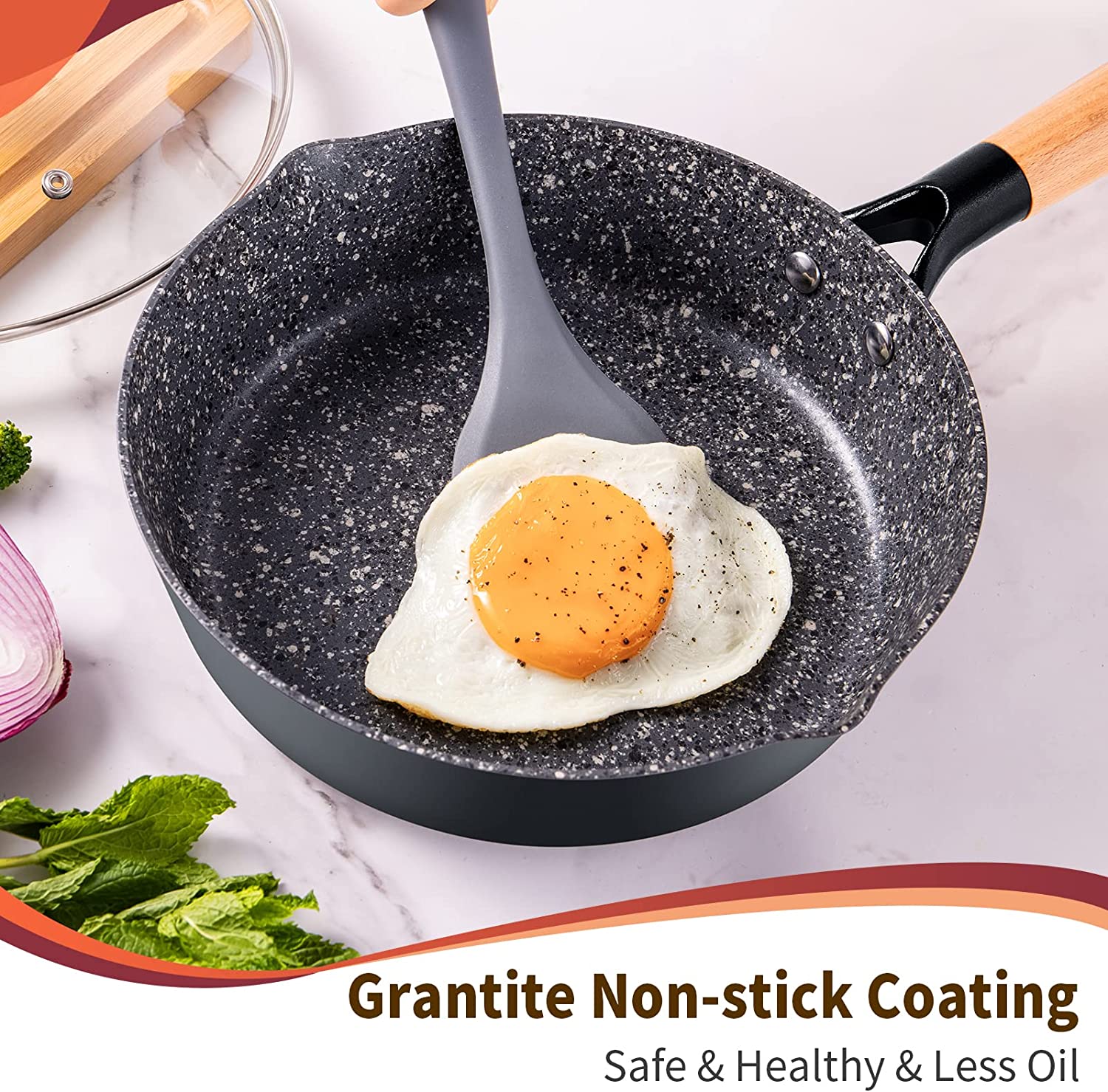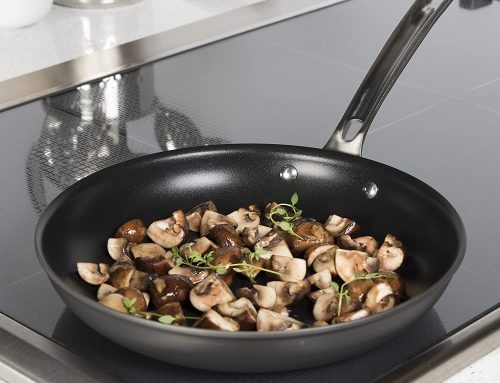Teflon is the most common coating for nonstick pans. It allows food to be cooked without the risk of burning it, but how safe is it for health? Can we cook with Teflon non-stick pans without fear? Let’s try to delve into this very delicate topic, remembering that there are still alternatives to Teflon.
Teflon is the most common coating for nonstick pans. It allows you to cook food without the risk of burning it, but how safe is it for health? Can we cook with Teflon-coated non-stick pans without fear?
Let’s try to delve into this very delicate topic, remembering that there are still alternatives to Teflon.

What is Teflon?
Teflon is the commercial name of a synthetic polymer, known as Polytetrafluoroethylene and with the abbreviation PTFE. It is a plastic material resistant to high temperatures, even higher than 200°C. PTFE is hydrophobic and has one of the lowest coefficients of friction compared to solid materials. In this way, the non-stick properties of Teflon-coated pans are guaranteed.
Toxic substances
According to the Environmental Working Group, the thermal degradation of PTFE leads to the release of toxic substances, including corrosive and lethal gases, as well as PFIB, a highly toxic chemical agent capable of persisting for a very long time in the environment. Also according to the opinion of the Environmental Working Group, Teflon would come into contact with our body, remaining inside it for a long time, and causing damage to the liver and thyroid, reducing our ability to fight infections. The problem of Teflon residues in food, and from it in our body, would mainly concern non-stick pans, even more, if damaged and scratched.
Dangers for humans
Teflon, in addition to being harmful to animals – lethal toxicity has been confirmed for birds – would represent a dangerous substance for humans. In rare cases, it would be able to cause a flu-like syndrome linked to exposure to toxic substances emanating from this material. The dangers would also affect breastfeeding women: Teflon residues have been identified in breast milk in 45 subjects, during a study conducted by researchers at the University of Manchester.
Dupont, the inventor, and first manufacturer of Teflon-coated products would have been aware of its adverse health effects for over 50 years. This was evident when production workers began to fall ill on the job. The risks would be linked to the substances and fumes released by the Teflon during cooking.
Teflon outlawed soon?
The Environmental Protection Agency (EPA) – American environmental protection agency – has ascertained that one of the substances used in the production of Teflon – perfluorooctanoic acid ( PFOA ) – remains in the blood for 4 years. Therefore, by 2015, manufacturers will have to stop producing them. In this regard, the EPA has turned to Dupont, 3M, and other large companies. Above all, there are fears of damage to the liver and to the reproductive system, as well as to pregnancy and future births, given that the residues of this material have been identified in the umbilical cords and the blood of pregnant women. Industrial spills of PFOA can cause the toxic substance to build up in groundwater, contaminating drinking water. PFOA is thought to be a probable human carcinogen.
Non-stick pans: are they dangerous?
The US decision to ban Teflon and PFOA should make us think. Is it dangerous to use non-stick pans, especially if they are damaged? In 2011, Altroconsumo conducted tests on artfully damaged frying pans without detecting the release of toxic substances, but simply the loss of their non-stick properties.
However, if scientific studies have identified dangerous substances linked to exposure to Teflon in the blood and the human body, it is difficult to believe that Teflon-coated non-stick pans are among the causes to be excluded. When in doubt, it’s best not to take any chances, especially with particularly worn pans.
Alternative al Teflon
He had already told you about the possible alternatives to Teflon. As far as pans and pots go, one of the safest choices would be stainless steel. Stainless steel is considered one of the most inert materials and would only be able to release small amounts of chromium and nickel. However, this could cause problems for those who suffer from allergies or intolerances, so a valid choice, in this case, may concern Pyrex glass pots. Enameled cast iron skillets, not coated with toxic paints, and eco-friendly skillets guaranteed to be Teflon-free may also be a viable solution.








